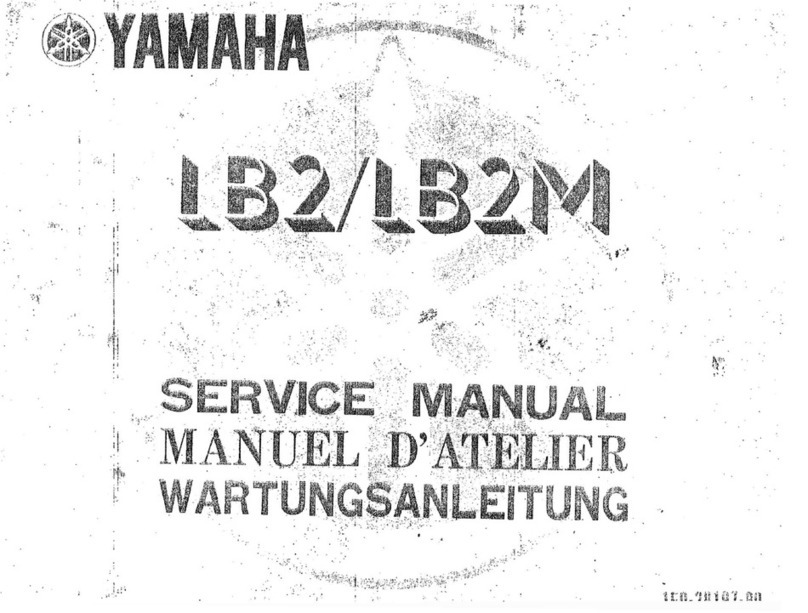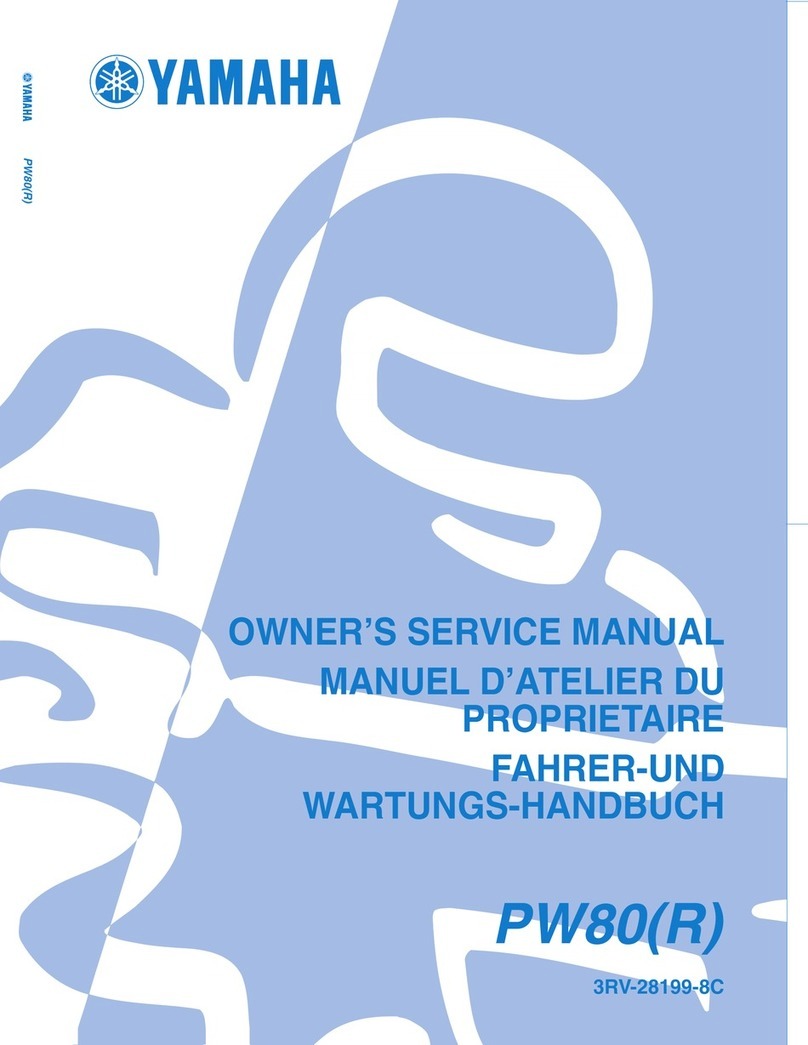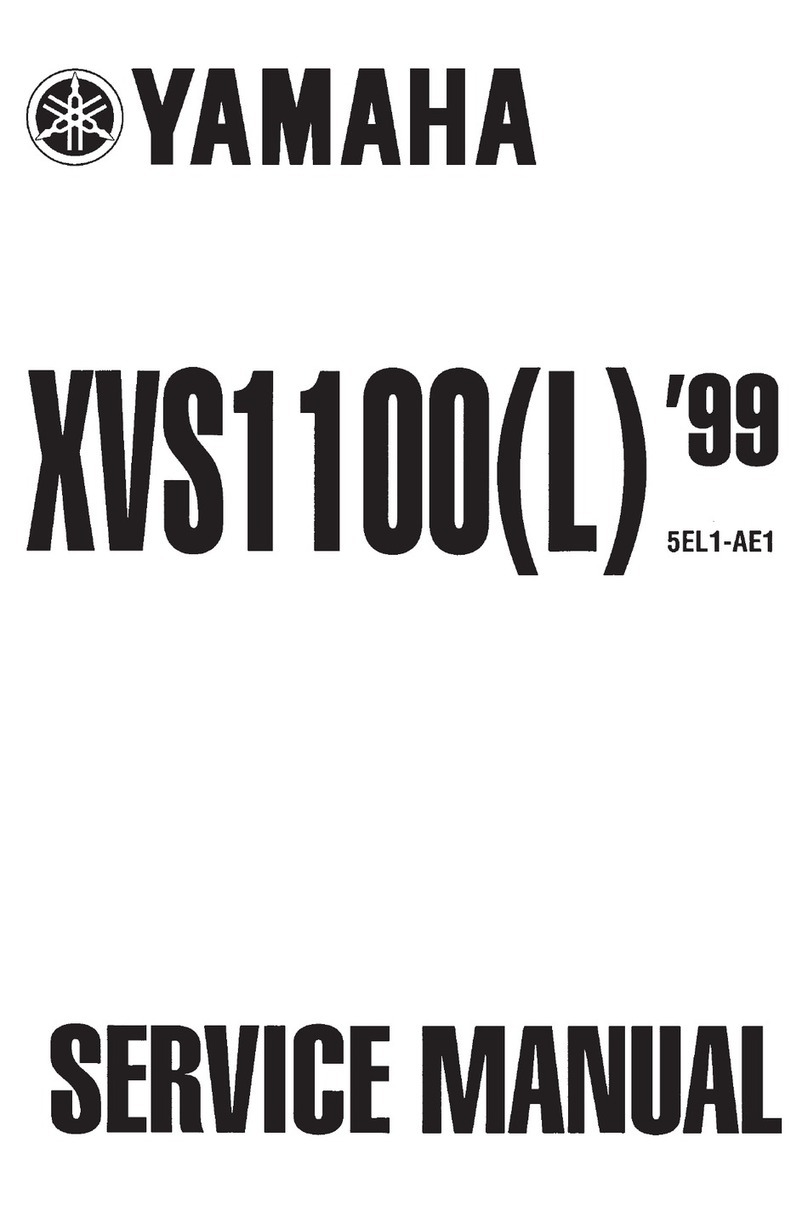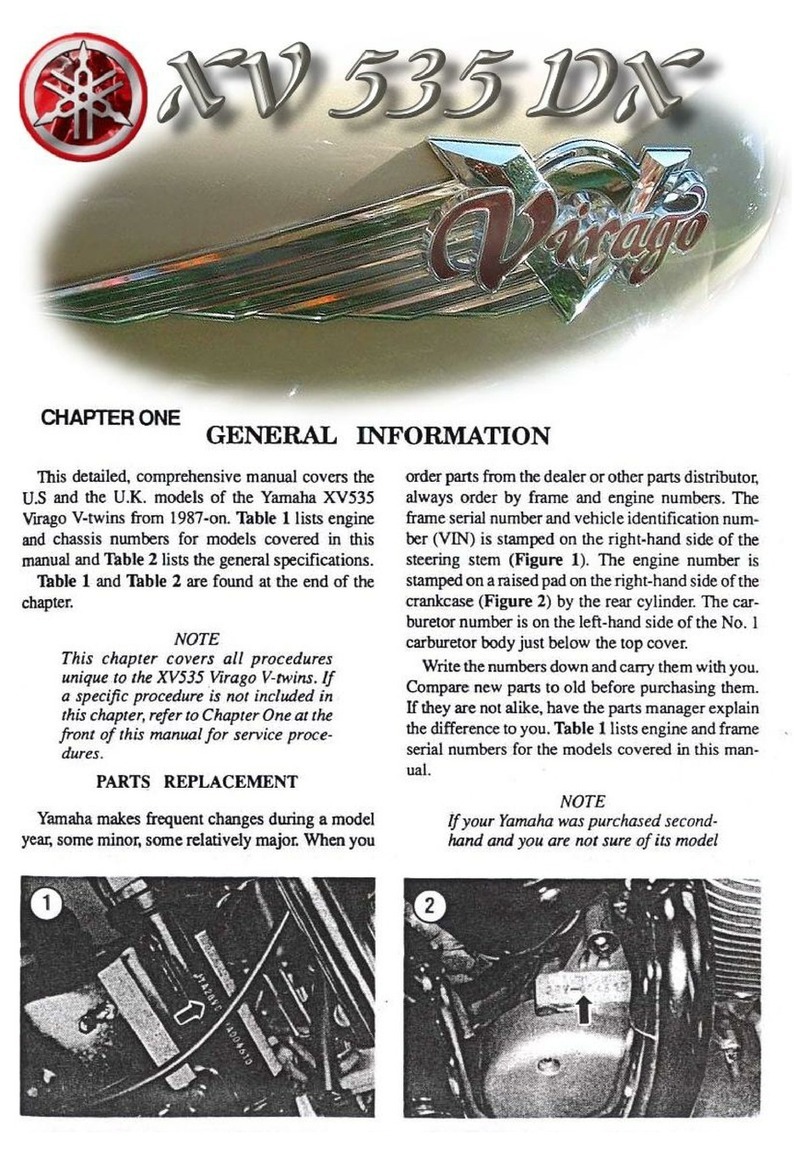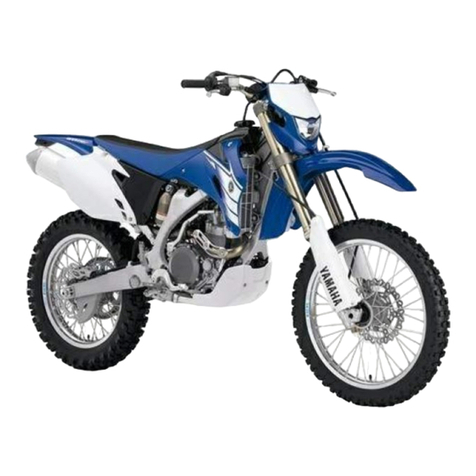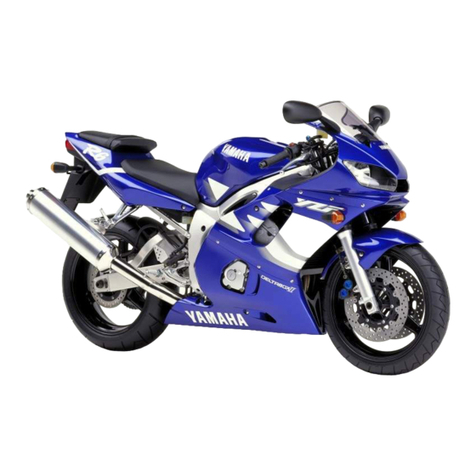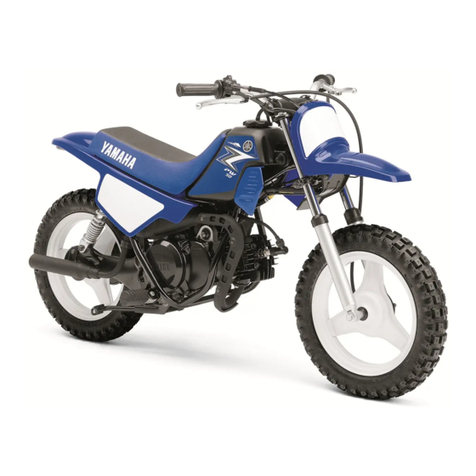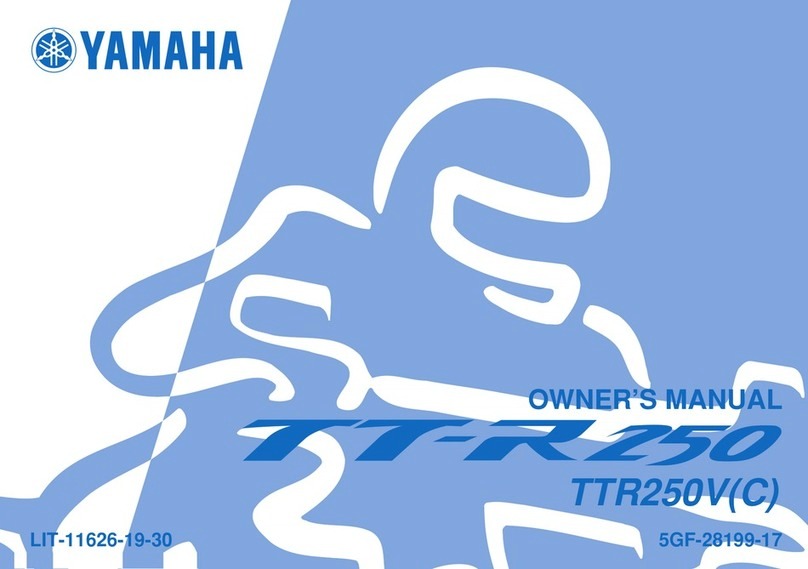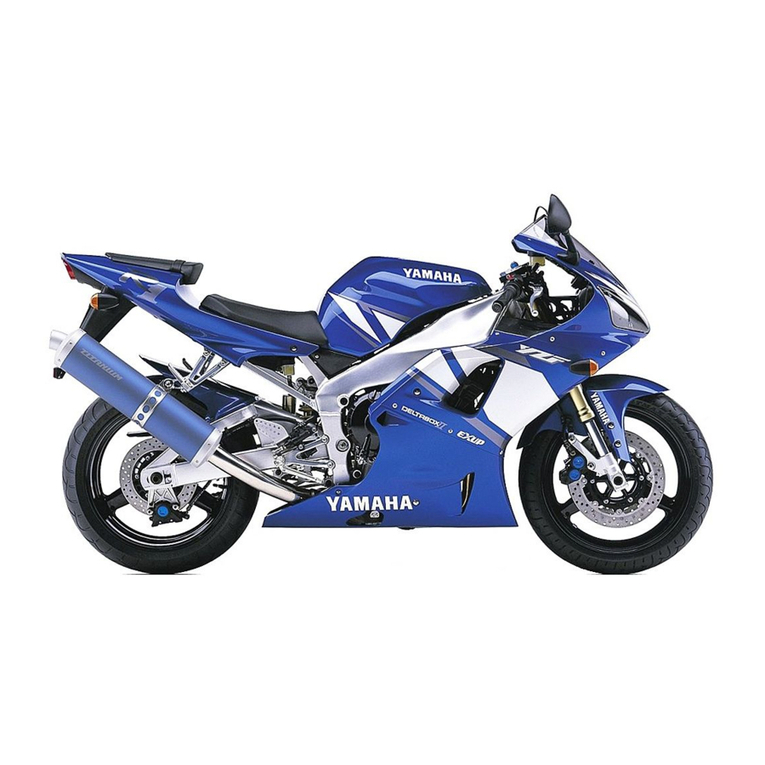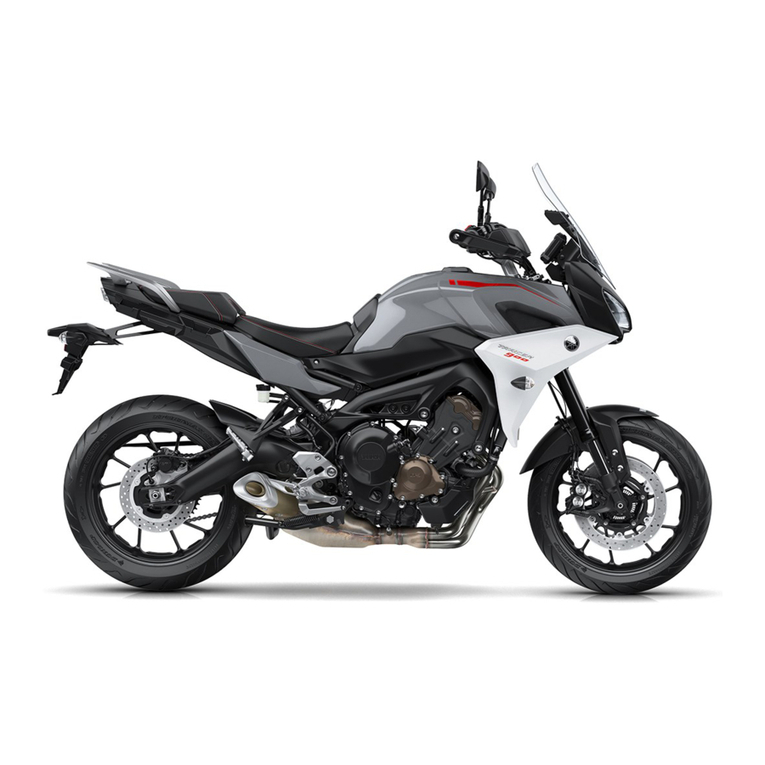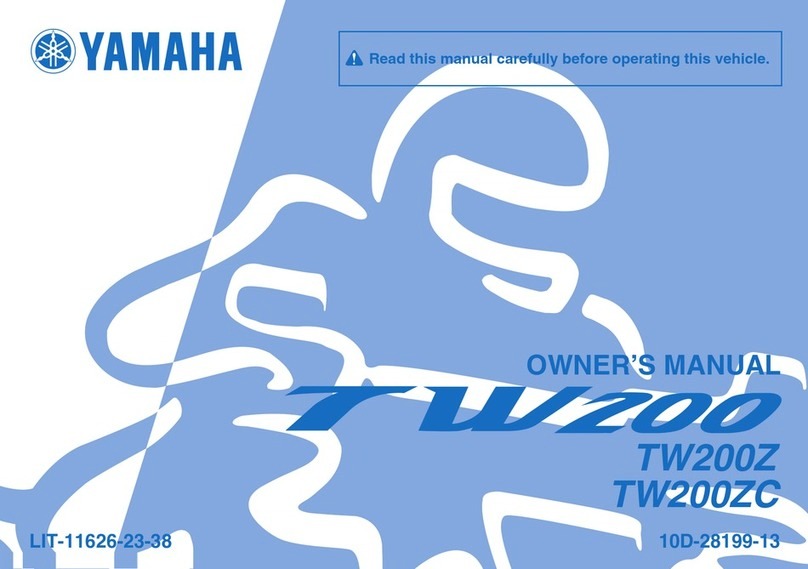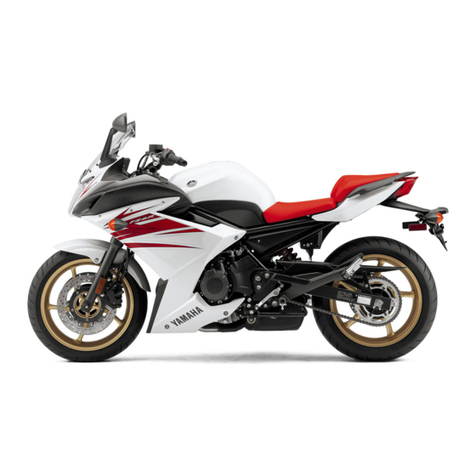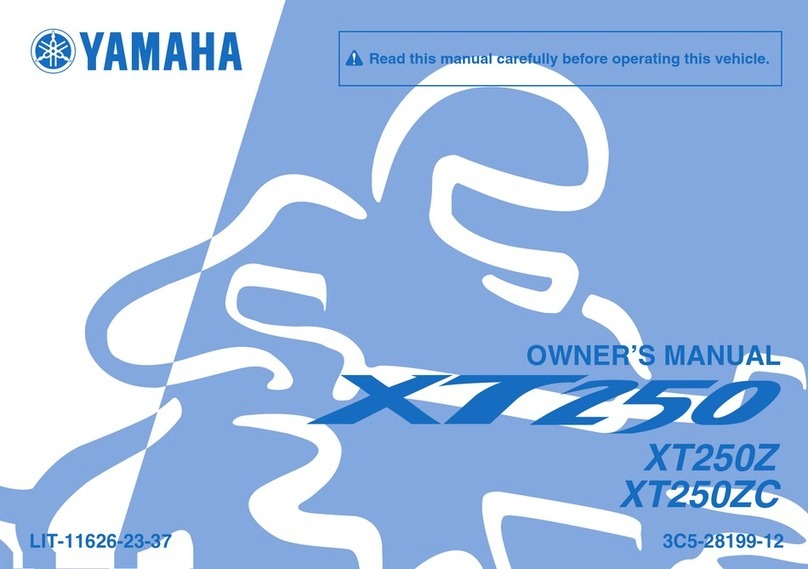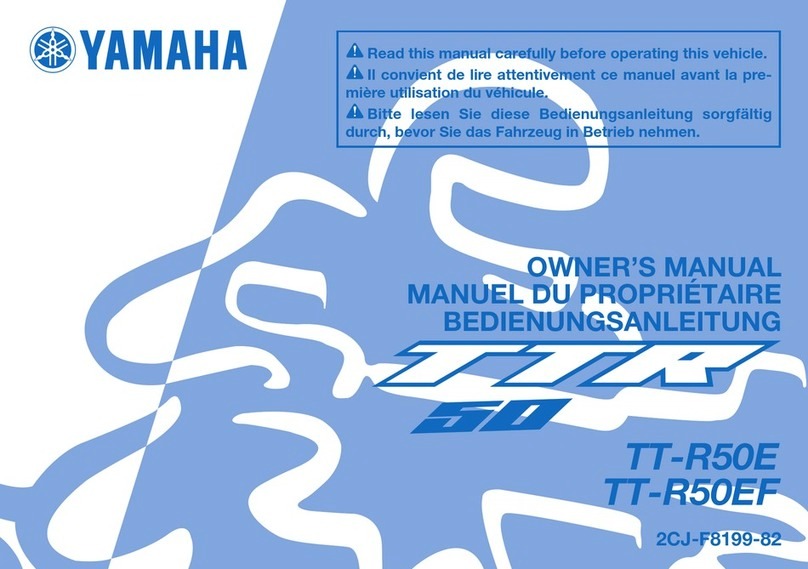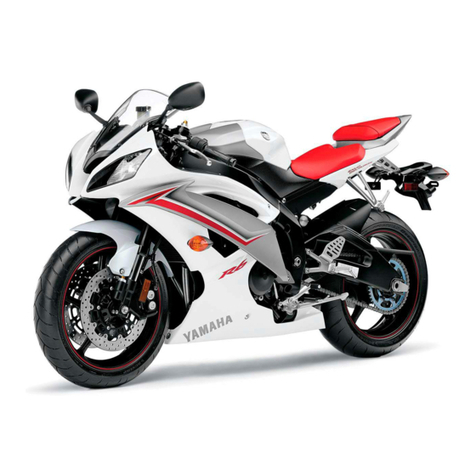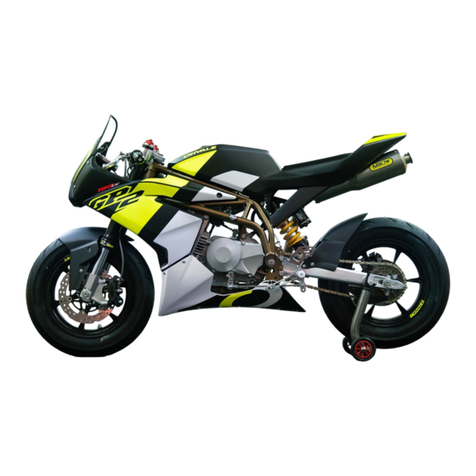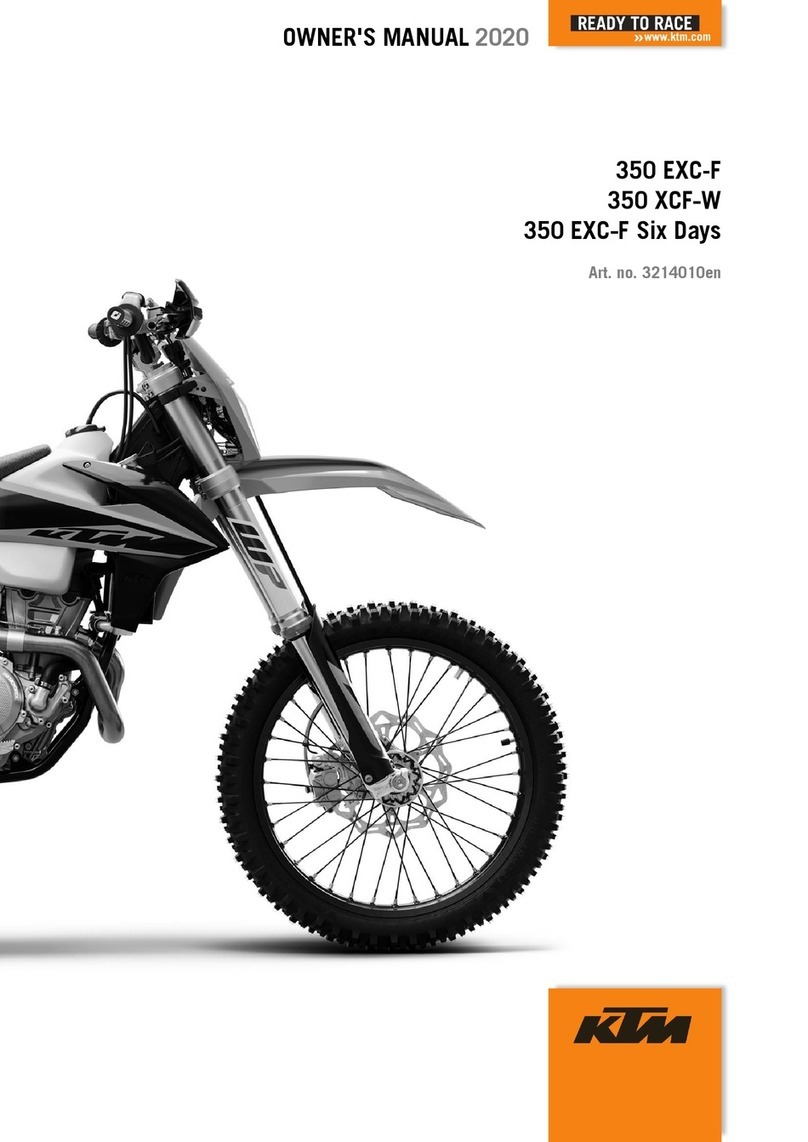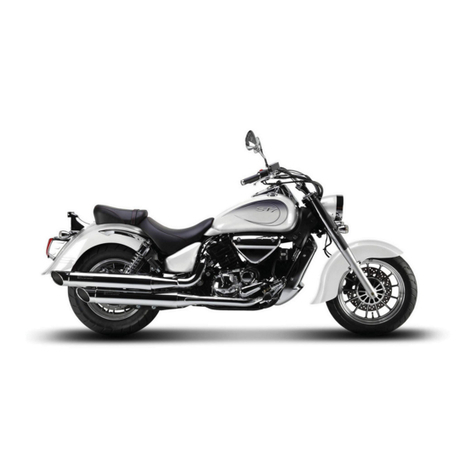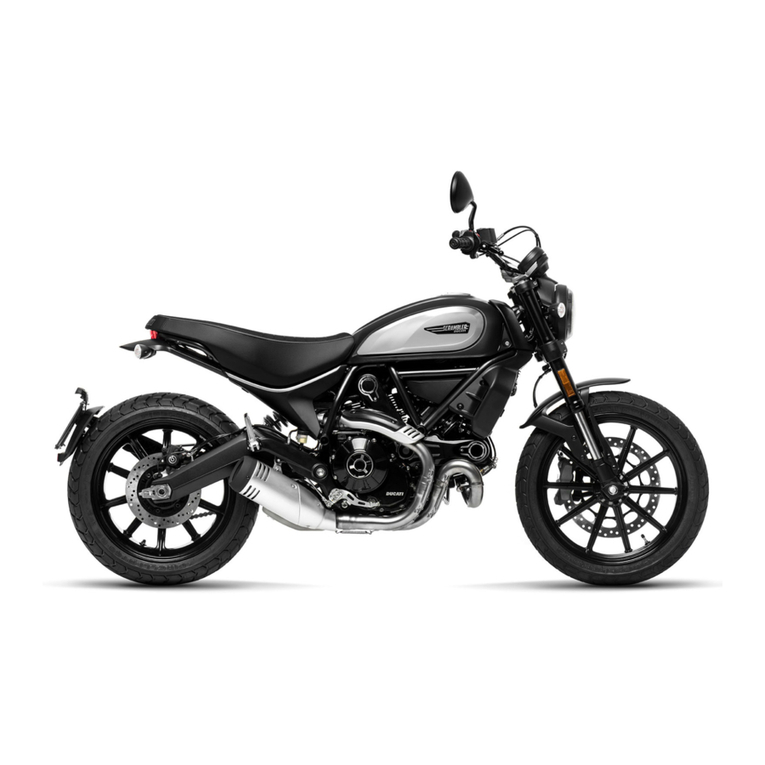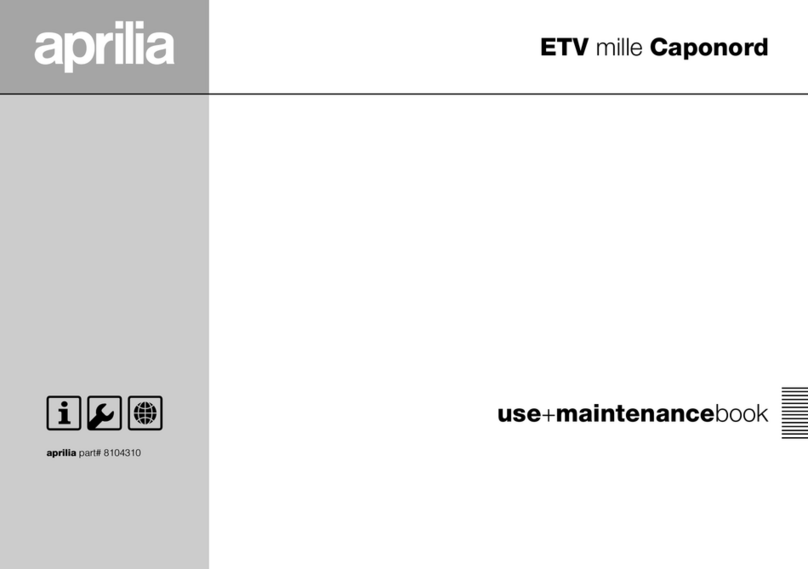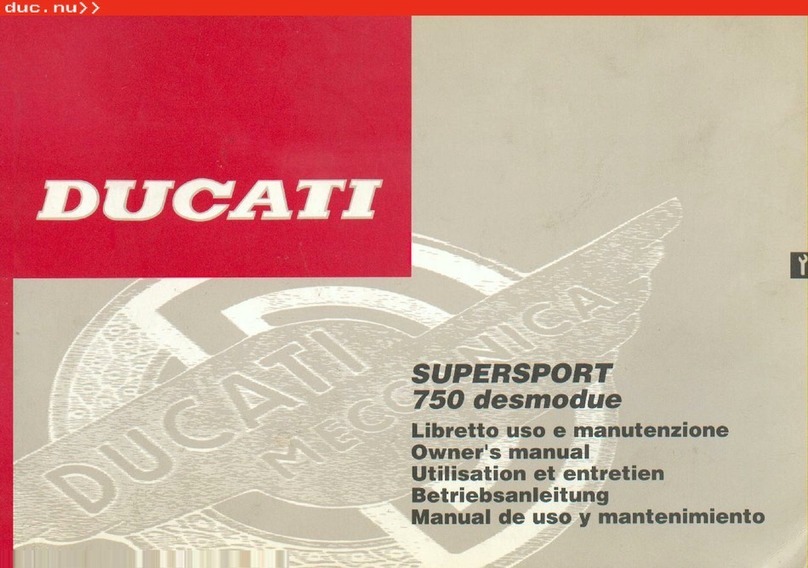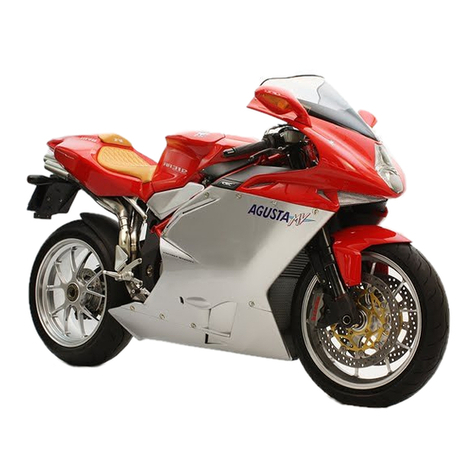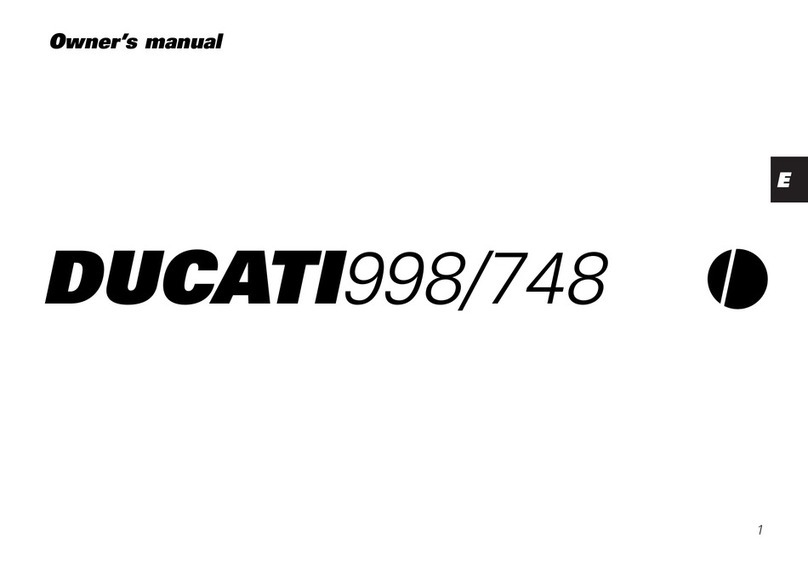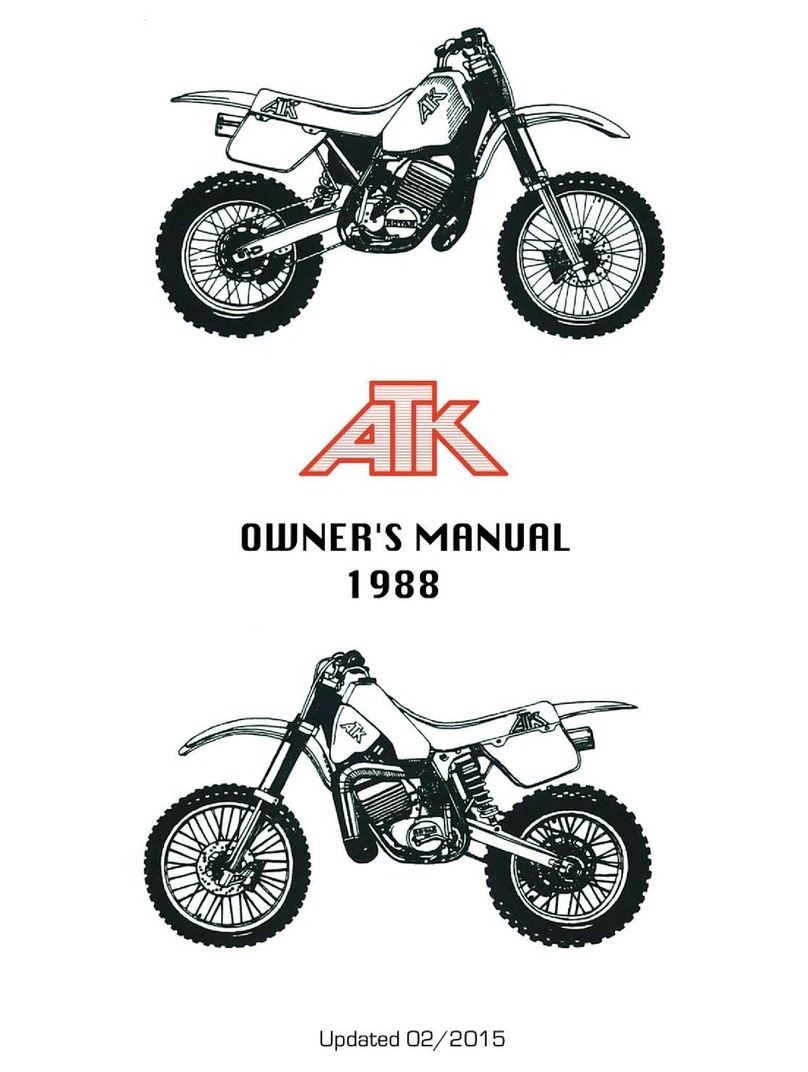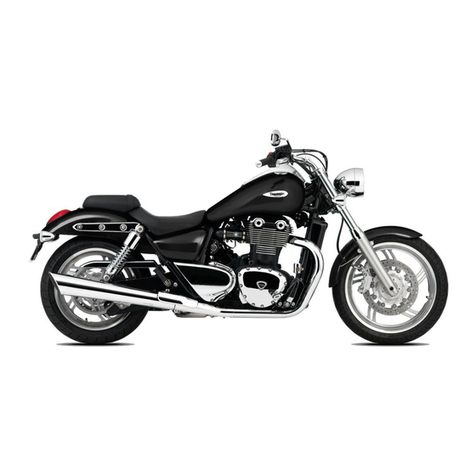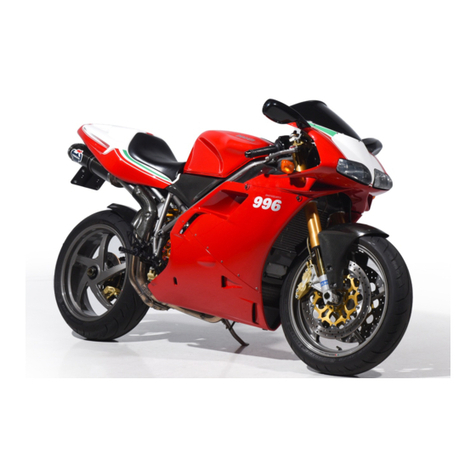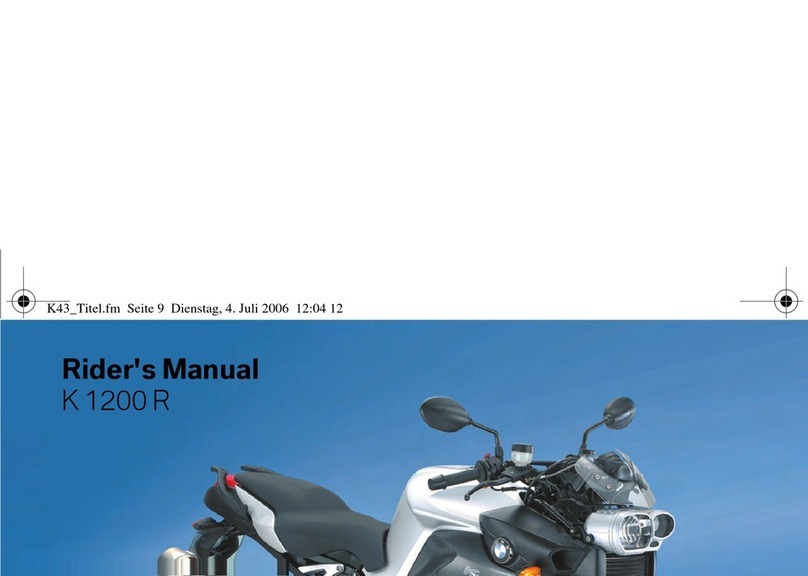
Table of contents
Location of important labels........... 1-1
Safety information............................ 2-1
Further safe-riding points ............... 2-5
Helmets .......................................... 2-6
Description ....................................... 3-1
Left view ......................................... 3-1
Right view....................................... 3-2
Controls and instruments ............... 3-3
Instrument andcontrol functions... 4-1
Main switch/steering lock............... 4-1
Keyhole shutter .............................. 4-2
Indicator lights and warning
lights............................................ 4-2
Multi-function meter unit ................ 4-3
Handlebar switches........................ 4-6
Front brake lever ............................ 4-7
Rear brake lever ............................. 4-7
Rear brake lever lock...................... 4-7
Fuel tank cap ................................. 4-8
Fuel................................................. 4-9
Catalytic converter ....................... 4-10
Kickstarter ................................... 4-11
Seat ............................................. 4-11
Helmet holders ............................. 4-11
Storage compartments................. 4-12
Power outlet ................................ 4-13
Sidestand ..................................... 4-14
Ignition circuit cut-off system....... 4-15
For your safety – pre-operation
checks ...............................................5-1
Operation andimportant riding
points .................................................6-1
Starting the engine..........................6-1
Starting off ......................................6-2
Acceleration and deceleration ........6-2
Braking............................................6-3
Tips for reducing fuel
consumption................................6-3
Engine break-in...............................6-3
Parking ............................................6-4
Periodic maintenance and
adjustment ........................................7-1
Tool kit ............................................7-1
Periodic maintenance chart for the
emission control system..............7-2
General maintenance and
lubrication chart...........................7-3
Removing and installing panels ......7-8
Checking the spark plug.................7-9
Engine oil and oil strainer..............7-11
Why Yamalube..............................7-13
Final transmission oil.....................7-13
Air filter and V-belt case air filter
elements ....................................7-14
Checking the throttle grip
free play .....................................7-17
Valve clearance.............................7-17
Tires .............................................. 7-17
Cast wheels .................................. 7-19
Checking the front brake lever
free play..................................... 7-19
Adjusting the rear brake lever
free play..................................... 7-20
Checking the front brake pads
and rear brake shoes ............... 7-21
Checking the brake fluid level ...... 7-21
Changing the brake fluid ............. 7-22
Checking the V-belt...................... 7-22
Checking and lubricating the
cables........................................ 7-23
Checking and lubricating the
throttle grip and cable............... 7-23
Lubricating the front and rear
brake levers............................... 7-23
Checking and lubricating the
centerstand and sidestand........ 7-24
Checking the front fork ................. 7-25
Checking the steering................... 7-25
Checking the wheel bearings ....... 7-26
Battery .......................................... 7-26
Replacing the fuses ...................... 7-27
Headlights..................................... 7-28
Replacing an auxiliary light bulb... 7-28
Replacing a front turn signal
light bulb.................................... 7-29
Replacing a tail/brake light bulb
or a rear turn signal light bulb ... 7-29
Troubleshooting............................ 7-30
UB0PE0E0.book Page 1 Wednesday, October 17, 2018 8:48 AM


